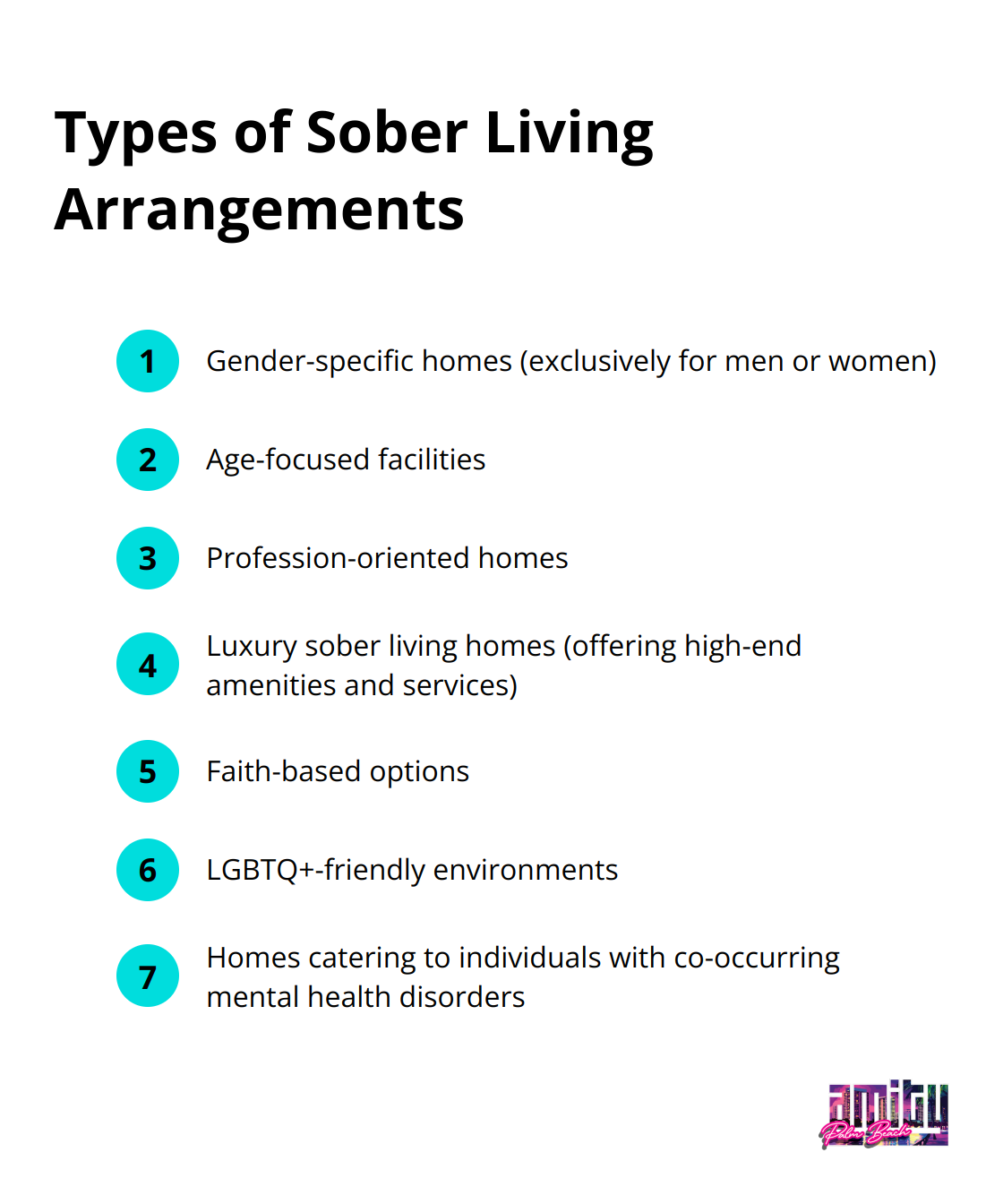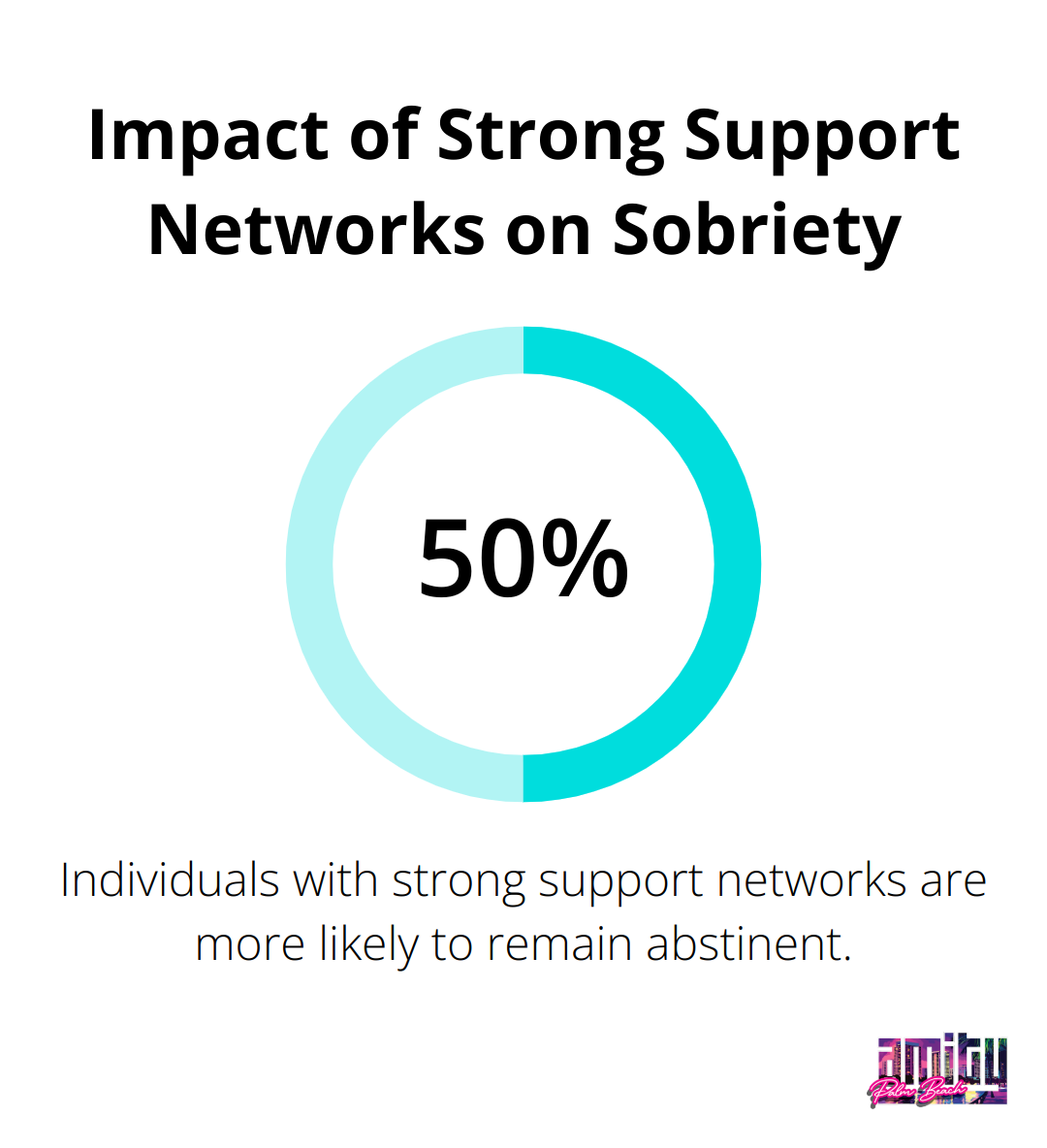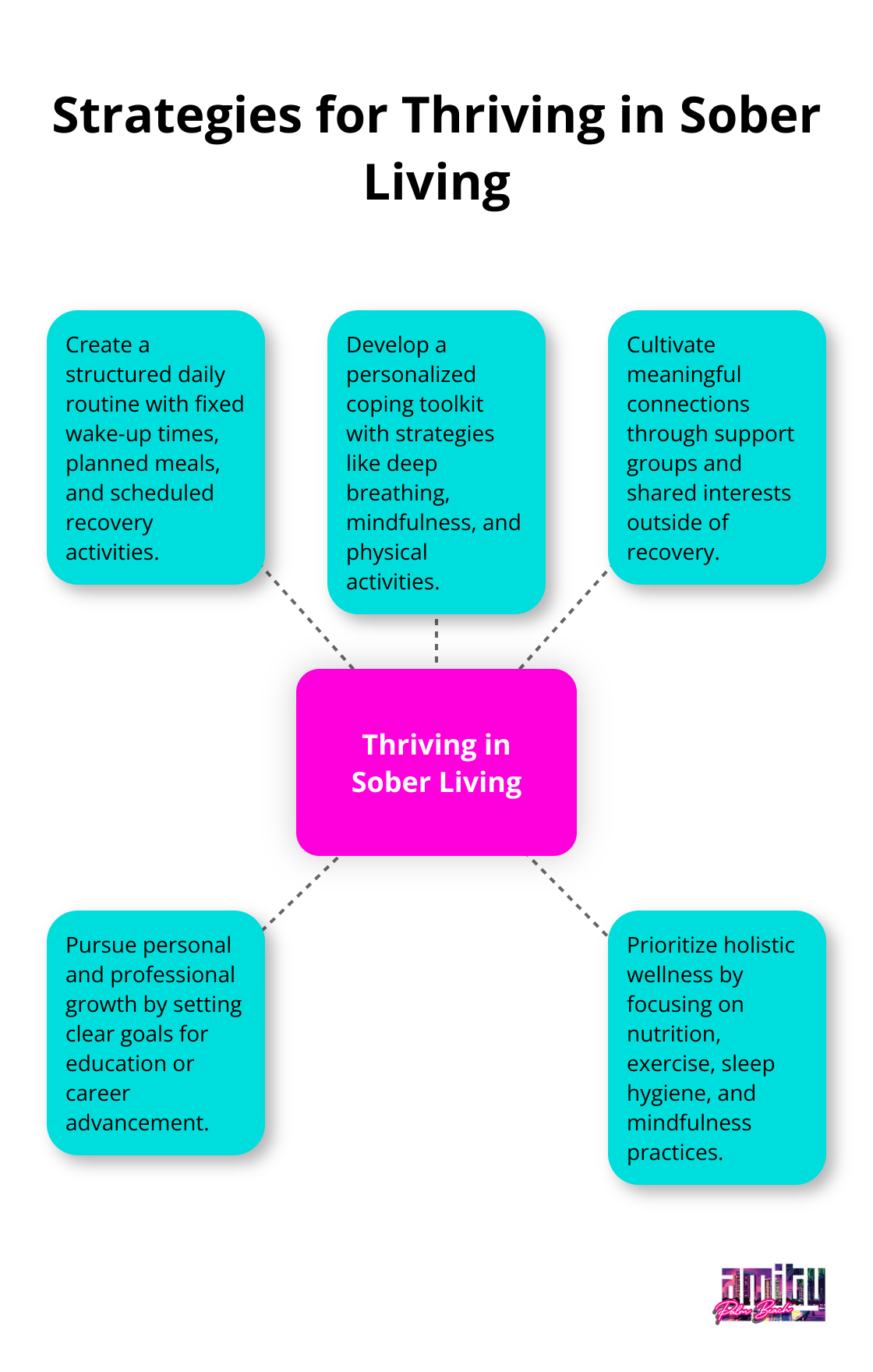At Amity Palm Beach, we understand the critical role sober living plays in long-term addiction recovery.
Sober living environments provide a structured, supportive bridge between intensive treatment and independent living. These homes offer individuals a chance to solidify their recovery skills while gradually reintegrating into society.
In this post, we’ll explore the numerous benefits of sober living and how it can lay the foundation for lasting success in recovery.
What Are Sober Living Homes?
Definition and Purpose
Sober living homes provide structured, substance-free environments for individuals recovering from addiction. At Amity Palm Beach, we recognize these homes as essential stepping stones between intensive treatment and independent living.
These facilities fill a critical gap in the addiction recovery process. They offer safe, supportive spaces where residents practice skills learned in treatment while reintegrating into society. Strict rules against drug and alcohol use, mandatory participation in recovery meetings, and regular drug testing (typically) characterize these homes.
The Substance Abuse and Mental Health Services Administration (SAMHSA) is committed to improving prevention, treatment, and recovery support services for mental and substance use disorders. These homes play a vital role in reducing relapse rates and promoting long-term recovery.
Types of Sober Living Arrangements
Sober living homes come in various forms to meet different needs and preferences:

The National Association of Recovery Residences (NARR) has classified four levels of recovery residences, ranging from peer-run facilities to clinically managed environments.
The Recovery Continuum
Sober living homes occupy a unique position in the addiction recovery continuum. They bridge the gap between the highly structured environment of inpatient treatment and the challenges of independent living. This transitional phase proves crucial for many individuals in recovery.
Research indicates that longer engagement with treatment services correlates with better outcomes. A study published in the Journal of Psychoactive Drugs found that individuals who lived in sober living homes after treatment had significantly better outcomes in terms of abstinence rates and employment compared to those who didn’t.
Clients who transition to sober living after completing residential programs often experience smoother adjustments and lower relapse rates. These homes provide a supportive community, accountability, and ongoing access to recovery resources that can make a significant difference in long-term success.
The Impact of Structured Environments
The structured nature of sober living homes contributes significantly to their effectiveness. These environments (often) include:
- Regular house meetings
- Chore assignments
- Curfews
- Mandatory attendance at support group meetings
- Employment or volunteer requirements
These structures help residents develop routine, responsibility, and accountability-skills essential for maintaining long-term sobriety. The combination of structure and peer support creates a powerful foundation for recovery.
Why Sober Living Works: Key Benefits for Recovery
The Power of Accountability
Accountability forms the foundation of successful recovery. Sober living homes hold residents responsible for their actions and choices. This often includes regular drug testing, adherence to curfews, and participation in house meetings. UCLA studies reveal that residents maintaining sobriety in sober living homes for at least six months see reduced relapse occurrences.
Building a Recovery Community
Peer support proves invaluable in recovery. Sober living homes create a built-in community of individuals who understand the challenges of addiction. This network provides emotional support, practical advice, and a sense of belonging. Research from the National Institute on Drug Abuse shows that social support is a key factor in maintaining long-term sobriety, with individuals who have strong support networks being 50% more likely to remain abstinent.

Gradual Transition to Independence
Sober living offers a step-down approach to independent living. Residents practice life skills, manage finances, and navigate daily responsibilities in a supportive environment. This gradual transition reduces the shock of returning to “normal” life and allows for the development of healthy habits. Data indicates that individuals who stayed in sober living homes for six months or longer had higher employment rates and lower rates of arrest compared to those who left earlier.
Skill Development and Personal Growth
Sober living environments provide opportunities for residents to develop essential life skills. These may include:
- Budgeting and financial management
- Cooking and meal planning
- Time management and organization
- Conflict resolution and communication skills
- Job search and interview preparation
Many sober living homes (including those at Amity Palm Beach) offer workshops, classes, or individual coaching to support skill development. This focus on personal growth equips residents with the tools they need for long-term success in recovery.
Access to Ongoing Support and Resources
Sober living homes typically maintain connections with a network of recovery resources. This may include:
- Local support group meetings (AA, NA, SMART Recovery)
- Outpatient therapy and counseling services
- Career development resources
- Educational opportunities
- Wellness and fitness programs
These ongoing support systems help residents maintain their recovery momentum and address challenges as they arise. The combination of structured living and readily available resources creates a powerful foundation for lasting sobriety.
As we explore the benefits of sober living, it’s important to understand how to maximize success within these environments. Let’s examine some strategies for thriving in sober living and building a strong foundation for long-term recovery.
How to Thrive in Sober Living

Create a Structured Daily Routine
Structure and proven techniques help in minimizing relapse rates during recovery. Set a fixed wake-up time, plan your meals, allocate time for work or study, and schedule recovery-focused activities. Employing methods such as Cognitive-Behavioral Therapy and Dialectical Behavior Therapy can be beneficial in maintaining a structured routine.
Start your mornings with meditation or journaling to set a positive tone. Conclude your evenings with gratitude practice or relaxation exercises. These bookends reinforce your commitment to sobriety and create stability.
Develop a Personalized Coping Toolkit
The identification and management of triggers are essential for long-term sobriety. Work with your therapist or counselor to create a tailored set of coping strategies. This might include deep breathing exercises, mindfulness techniques, or physical activities (such as running or yoga).
Try various techniques to find what works best for you.
Cultivate Meaningful Connections
A strong support network is vital for recovery success. Attend support group meetings regularly, even when you feel strong in your sobriety. Studies have demonstrated increased treatment retention, improved relationships with treatment providers and social supports, and increased satisfaction with treatment services associated with strong support networks.
Don’t limit yourself to recovery-specific connections. Join clubs, volunteer, or take classes to meet people with shared interests. The expansion of your social circle provides additional support and helps you rediscover passions beyond substance use.
Pursue Personal and Professional Growth
Use your time in sober living to invest in your future. Set clear, achievable goals for education or career advancement. Many sober living homes offer resources for job training or educational support. Take advantage of these opportunities.
Whether it’s earning a certification, starting a new hobby, or exploring a career change, personal growth reinforces your commitment to a sober lifestyle.
Prioritize Holistic Wellness
Recovery isn’t just about abstinence from substances-it’s about the creation of a fulfilling, balanced life. Focus on nutrition, exercise, and sleep hygiene.
Consider the incorporation of mindfulness practices like meditation or yoga into your routine.
Final Thoughts
Sober living environments provide a vital bridge between intensive treatment and independent living. These structured homes offer individuals the chance to strengthen their recovery skills while they reintegrate into society. At Amity Palm Beach, we encourage those in recovery to consider this important step in their journey.
When you search for reputable sober living homes, research facilities certified by recognized organizations. Look for clear rules, expectations, and a range of support services. Consider factors such as location, cost, and specific programs to find the best fit for your needs and goals.
We at Amity Palm Beach understand the challenges and triumphs of recovery. Our approach to addiction treatment includes guidance for those transitioning to sober living environments (which we believe foster lasting recovery and personal growth). Take a courageous step towards a brighter future – consider sober living as a powerful tool in your recovery.




